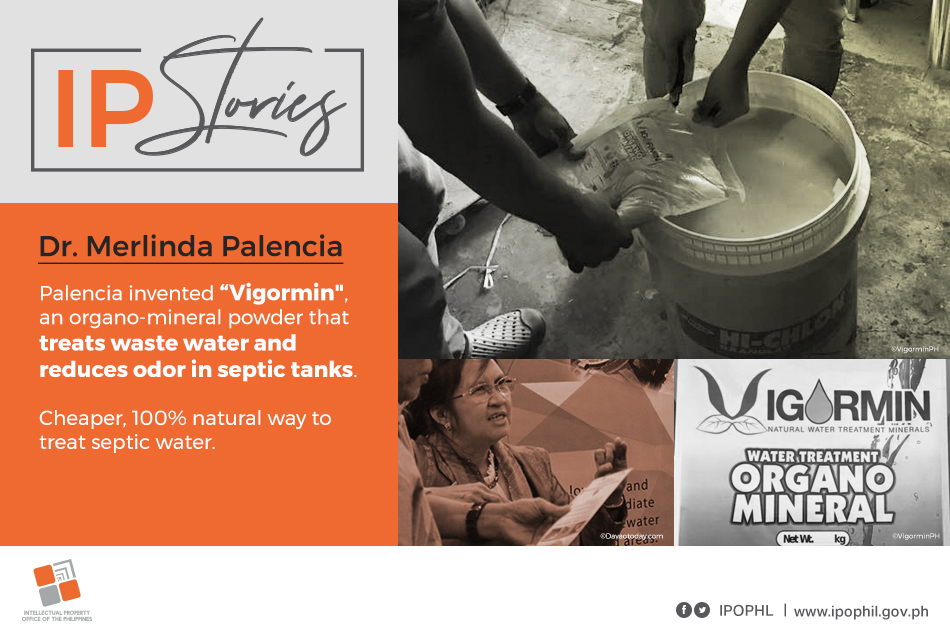Filipina chemical engineer-inventor finds opportunity for cleaner water invention in gov’t environment drive
| 21 June 2018 |

The government’s assertive push for environmental compliance especially in the country’s top tourist destinations has sent hotels and hospitality industry scrambling to ‘green’ their operations - and this has proven to be a boon for a Filipina inventor whose water treatment invention is seeing increased demand from top tourism operators in Palawan and Siargao.
Water pollution has long been a problem for Dr. Merlinda Palencia, who, as former Dean of the Graduate School of Adamson University, had to endure the filth and odor of waste water from Estero de Balete, one of the Pasig river’s tributaries whose route runs through the university’s grounds.
“The estero is a common problem for us because the odor, especially during low tide, is terrible. As a chemical engineer I thought of a way of addressing that problem and help the university neutralize the odor and at the same time improve the quality of water near Estero de Balete. From that idea, we initially tested locally available Organo Minerals in a septic tank of Adamson University. The test results showed it can really help in improving the quality of waste water,” Dr. Palencia says.
Moreover, the invention – a white powder mixture is 100% natural, made from naturally-occurring materials, and has no chemical-based component.
With this natural water treatment technology in mind and the wide-spread benefits it can bring to flood-prone Metro Manila, Dr. Palencia sought protection for it with the help of the university and the Intellectual Property Office of the Philippines (IPOPHL).
The Intellectual Property Office of the Philippines (IPOPHL) and Adamson University together launched an Innovation and Technology Support Office (ITSO) in the latter’s campus, which proved instrumental in helping Dr. Palencia develop the patent for the composition and method of the biomineral.
ITSO is a program of the Intellectual Property Office of the Philippines (IPOPHL) to spur innovation performance by putting up patent libraries in areas with high potential for patent and IP related activities. IPOPHL partnered with institutions (mostly universities and research organisations) in these high-potential areas and enabled them to create their own in-house patent libraries for the benefit of students and researchers.
“Once you have the patent, no one can just copy and business competition becomes ethical. the marketing and promotion of the product becomes more ethical because no one can just copy or develop similar products with similar materials. If there’s no patent it’s difficult to develop and invest initially because you do all the hard work and when it gains popularity, someone will just copy it,” Dr. Palencia remarked.
With the patent for the method and composition filed with IPOPHL, Dr. Palencia went about marketing her technology named ‘Vigormin’, and has quickly captured the attention of eco-conscious hotels and resorts.
“Among the business clients are resort and restaurant owners, and hotel management companies which operate in Leyte, Siargao Island, El Nido and Coron, Palawan.
Among local government units, the take-up has been more gradual but has seen reception from the municipalities of San Fernando in La Union, Palompon, in Leyte, General Luna and Del Carmen in Siargao.
The application of Vigormin for livestock is also being introduced in Pangasinan, Tanauan City and Agoncillo, Batangas.
There are currently two variants of the Vigormin products: Vigormin 732,which has natural components that improves waste water by absorbing pollutants and bioremediation. Its components also manages the pH level of water. Vigormin 550, a different ‘blend’ is another product for odor control in solid waste management and livestock and poultry industries..
With a kilo of the Vigormin product carrying an affordable price tag of P 200/kilo, and suggested use of once a month in the household’s septic system, Dr. Merlinda Palencia is hoping to make inroads not just among business clients but with individual consumers.
The Bigger Picture
The end goal of Dr. Palencia’s drive, however, is not just the commercial success of her invention - the ambition is for local government units and households, beyond those who cater to tourism establishments, to prioritise waste water sanitation.
“What we hope to do is make the product available in the supermarket for households but we want to target first the municipal environment officers and sanitation officers in the LGUS. We are trying to educate people that the problem of water pollution is not a problem of DENR alone but is everyone’s concern. We can protect the limited fresh water resources through collaboration and active participation in the treatment of domestic and industrial waste water” Dr. Palencia said.



